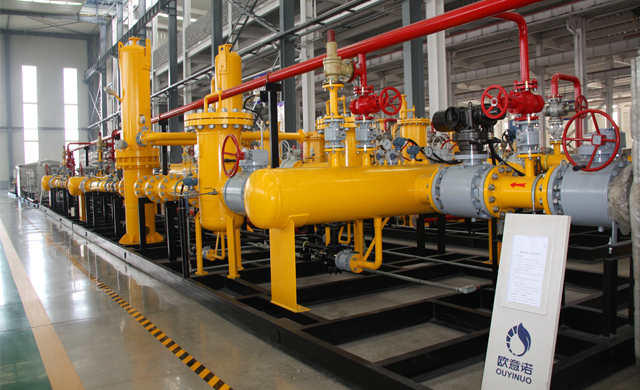
Dec . 16, 2024 12:50
Back to list
Optimizing Operations at Power Reduction Stations for Enhanced Efficiency and Performance
Reducing Station A Key Element in Modern Utility Management
In the world of infrastructure and utility management, the term reducing station refers to an essential facility designed to manage the pressure of gases before they enter distribution networks. These stations play a pivotal role in ensuring safety, efficiency, and reliability in various industries, particularly in the distribution of natural gas and other gaseous materials. As urbanization and industrial activities continue to rise globally, understanding the significance of reducing stations becomes increasingly relevant.
What is a Reducing Station?
A reducing station functions primarily to regulate the pressure of gas coming from high-pressure pipelines and reduces it to a level that is safe and suitable for residential and industrial consumption. This process is crucial as the gas that travels through main pipelines is often under extremely high pressure, which can be dangerous if directly delivered to end-users. By employing pressure regulators and other control devices, reducing stations ensure that the gas reaches consumers at a safe and workable pressure.
Components of a Reducing Station
Typically, a reducing station comprises several key components, including pressure regulators, filtration systems, heaters, and safety devices. The pressure regulators are the heart of the station, controlling the output pressure and ensuring it remains within specified limits. Filtration systems are essential for removing impurities from the gas, preventing damage to downstream equipment and ensuring the efficient operation of appliances that rely on clean gas.
Heaters are sometimes used in colder climates to prevent the gas from condensing and mixing with liquid water, which could cause blockages or other operational issues. Safety devices, such as pressure relief valves and emergency shutdown systems, are critical for mitigating risks in case of unexpected pressure surges or equipment malfunctions.
Importance of Reducing Stations
reducing station

Reducing stations serve several crucial functions. Firstly, they enhance safety by preventing over-pressurization, which can lead to catastrophic accidents such as explosions or leaks. In densely populated urban areas, the risk associated with high-pressure gas distribution underlines the need for these stations.
Secondly, they improve the overall efficiency of gas distribution systems. By maintaining optimal pressure levels, reducing stations help to ensure that gas flows smoothly and consistently, minimizing energy losses and wastage. This efficiency is especially vital in the context of rising energy costs and the push for sustainable energy practices.
Furthermore, the advent of smart technology has begun to influence the design and operation of reducing stations. With the integration of sensors and automated controls, these stations can respond in real-time to fluctuations in pressure, demand, and supply conditions. This capability enhances operational reliability and efficiency, allowing utility companies to respond more effectively to the demands of their consumers.
Challenges and Future Directions
Despite their importance, reducing stations are not without challenges. Aging infrastructure is a significant concern in many regions, requiring upgrades and maintenance to ensure they meet current safety and efficiency standards. Additionally, the rise of alternative energy sources, such as renewable gases, presents new challenges for the design and operation of reducing stations. As the energy landscape evolves, these stations must adapt to accommodate different types of gases, including hydrogen, which may require new materials and technologies.
Investments in research and development are crucial to ensure that reducing stations can meet future demands and challenges. This includes exploring innovations in materials science and control systems, as well as integrating renewable energy solutions into existing infrastructure.
Conclusion
In conclusion, reducing stations play a critical role in the safe and efficient distribution of gases in modern utility systems. As the global demand for energy continues to grow, the importance of these facilities will only increase. They not only enhance safety and operational efficiency but also represent a key area for innovation in the evolving energy landscape. Moving forward, addressing the challenges faced by reducing stations will be essential for ensuring that utility companies can provide reliable and sustainable energy solutions to their consumers. Through ongoing investment and adaptation, reducing stations will continue to be integral to the successful management of gas distribution networks worldwide.
Next:
Latest news
-
Safety Valve Spring-Loaded Design Overpressure ProtectionNewsJul.25,2025
-
Precision Voltage Regulator AC5 Accuracy Grade PerformanceNewsJul.25,2025
-
Natural Gas Pressure Regulating Skid Industrial Pipeline ApplicationsNewsJul.25,2025
-
Natural Gas Filter Stainless Steel Mesh Element DesignNewsJul.25,2025
-
Gas Pressure Regulator Valve Direct-Acting Spring-Loaded DesignNewsJul.25,2025
-
Decompression Equipment Multi-Stage Heat Exchange System DesignNewsJul.25,2025

